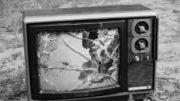Some of your favorite over-the-air TV stations just might be getting harder to watch. The FCC is in the process of making TV stations move out of the range from channels 37-51, and that means other stations sometimes have to move as well. It’s called the “repack” and it’s mostly good for everyone. However, it could cause problems for you. How can you know for sure?
Why the repack?
Generations ago, TVs tuned channels 2-83. There were 82 channels even though the busiest and largest cities had no more than about 20 stations. Partially, this was to allow for “future expansion” but there was a much more down-to-earth reason for it.
The older analog technology that was used in TV until 2009 was pretty messy by today’s standards. Broadcasts from one channel could overlap into another channel very easily. So, a rule was made and it went basically like this:
No two stations in the same market can be on adjoining channels. No two stations in adjoining markets can be on adjoining channels.
In other words, if you had channel 7 in your market you couldn’t have channel 8. None of the cities around you could have channel 8 either. (There are three exceptions, because channels 4 and 5 have a big gap between them and so do channels 6 – 7 and 13 – 14.) Now if you think about that in your mind, you’ll realize that there needed to be a lot of math to make sure every city didn’t have channels next to the channels in any city near it. It took a lot of work and realistically it meant you needed about three times the number of channels as you actually had stations.
It got better…
That changed with digital broadcasting. New technology meant there was no problem putting stations right next to each other. In the first go-round, even before digital broadcasting, channels 70-83 went away. With digital broadcasting in 2009, channels 51-69 went away. Those frequencies were allocated to cell phones and first responder radios, things that weren’t thought about in the 1940s when this was all set up.
Now, channels 37-51 are going away. This makes room for a new generation of cellular data services which we all want.
So, what does this have to do with VHF?
The original goal with digital broadcasting was to move all (or almost all) broadcasting to channels 14-51. While it takes more power to broadcast an effective signal that way, it means the antennas can be a lot smaller. People want small antennas.
During the repack process, the FCC tried to buy back broadcast licenses so there would be fewer stations. It didn’t work and most markets won’t lose more than one or two. This means that all the broadcasting in some markets won’t fit on channels 14-36. Some stations will have to use those VHF frequencies from 7-13. In some very crowded markets, some channels will have to move to channels 2-6. It’s very hard for a small antenna to get those channels.
The problem gets worse if the government decides to adopt a new broadcast standard. There’s talk of taking TV to 4K and if that happens, each broadcaster will need two stations for several years. You should assume at least one will be in the VHF band.
How can you know if you’re affected?
As I wrote here, there are online resources that will show you if your area will get new VHF channels. It will also tell you when things will change. When they do, even if you don’t need a new antenna you’ll still need to scan for channels.
If you need a new antenna, you will find the best selection at Solid Signal. Unless you’re fairly close to the broadcast source, you’ll probably need an outdoor antenna. VHF signals are very large — close to 6 feet long — and a large signal takes a large antenna. Smaller antennas can’t effectively receive the very large radio waves used by VHF broadcasting.





